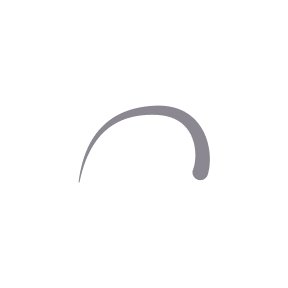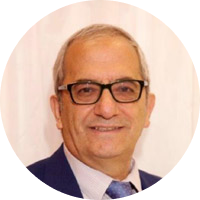
Gynekomasti operasjon (Store bryst hos menn)
Hos noen menn utvikles brystene noe mer enn ønsket. Man må utelukke hormonell forstyrring eller bruk av anabole steroider, da disse kan gi store bryst. Det er imidlertid en del gynekomastier som er idiopatiske dvs. man vet ikke årsaken til at dette skjer. Tilstanden kan være svært sjenerende både sosialt og intimt, og det er grunn til behandling.
Behandlingen kan være med fettfjerning hvis andelen av fett er mer enn kjertelen (se informasjon om fettfjerning/bryst, og om brystreduksjon). Det er imidlertid nødvendig med kirurgisk fjerning av hele (eller deler av) brystkjertelen, hvis brystene er for store og inneholder flere kjertler. I svært store bryst hos menn kan det bli aktuelt med brystreduksjon på samme måte som hos kvinner. Det er viktig med en grundig vurdering ved en konsultasjon. Man må huske at kirurgisk fjerning etterlater arr som kan plasseres rundt brystvorte eller under brystet. Operasjonen kan utføres under lokalbedøvelse og sedasjon i tillegg.
For å få et best mulig resultat og for å unngå komplikasjoner, anbefales at du har så normal vekt som mulig. Røyker du må du slutte minst 1 uke før operasjonen og være røykfri i 2 uker etter operasjonen.
Vi lukker såret med sting som løser seg opp av seg selv, eventuelt fjernes stingene her etter 10 dager. Operasjonen gir i prinsippet ikke grunnlag for sykemelding. Fysisk trening og hardt kroppslig arbeid bør man vente med i 2-3 uker. Du får en bandasje (body) av oss etter operasjonen som du skal bruke natt og dag i 6 uker som strammer godt over brystpartiet. Arrene er i begynnelsen ofte røde, kløende og harde, men med tiden blekner og mykner de. I sjeldne tilfeller blir arrene brede og godt synlige fordi dette er avhengig av mannens egne nedarvede egenskaper.
Henting og ev overnatting
Du må på forhånd avtale med en person om å hente deg på klinikken ca. 1 time etter avsluttet operasjonen, ettersom du selv ikke kan kjøre bil, ta kollektiv eller taxi alene. Du skal også ha noen hos deg samme dag og første natten.
Bor du langt fra klinikken, anbefaler vi at du overnatter i Oslo, enten hos familie/venner eller på hotell.
Hoteller i nærhet av Oslo Plastikkirurgi;
Hotel Gabels Hus i Gabelsgate 16.
Frogner House Apartments, Bygdøy Allé 53.
(Vi har avtale med Frogner House Apartments, informer om oss ved booking av rom)
Før operasjonen
Du må være frisk operasjonsdagen. Er du i tvil om du skulle være forkjølet eller lignende må du ta kontakt med oss. Operasjonen utføres ikke når man har influensa med feber eller hoste eller annen infeksjon. Før operasjonen får du resept på antibiotika, eventuelt smertestillende og rens oppløsning 40 mg/ml som du får kjøpt på apoteket.
Dagen før operasjon og operasjonsdagen skal du dusje og vaske kropp og hår hjemme med rens oppløsningen. Dette er en desinfiserende såpe som skal skylles av med vann og huden tørkes med et rent håndkle. Ta på deg rene og behagelige klær når du reiser hjemmefra. Alt av smykker, piercing og neglelakk inkludert f.eks akrylnegler må være fjernet senest dagen før operasjonen og kan settes tilbake 7 til 10 dager etter operasjonen.
Du må møte fastende til operasjonen. Det vil si at du ikke skal spise mat 6 timer før operasjonen, men du kan drikke vann og saft (ikke melk eller juice), tygge tyggegummi/halspastill inntil 4 timer før operasjonen. Du må på forhånd avtale med en person om å hente deg på klinikken ca 1 time etter operasjonen, ettersom du da selv ikke kan kjøre bil eller ta taxi alene.
Det er viktig at du slutter ca 14 dager før operasjonen med medisiner som virker blodfortynnende. For andre medisiner konferer med klinikken før operasjonen. Mye hvitløk og helsekostpreparater må heller ikke inntas.
På operasjonsdagen
Du blir mottatt av vårt personale som ferdigstiller deg til operasjonen før kirurgen ser til deg. Før selve inngrepet vil kirurgen gå igjennom inngrepet, tegne opp det planlagte, samt svare deg på dine spørsmål du måtte ha. Anestesipersonell kommer også og hilser på deg og svarer på dine spørsmål.
Når operasjonen skal begynne vil operasjonssykepleier hente deg og vaske operasjonsområdet imens anestesipersonell gir deg beroligende middel i armen så du sover under operasjon. I tillegg setter kirurgen lokal bedøvelse i operasjonsområde for en langvarig smertestillende effekt i operasjonsområdet etter operasjonen, som i tillegg forminsker blødning i området.
Etter operasjonen blir du flyttet til oppvåkningsrommet der du har din egen seng. Du hviler så i 1-2 timer og får servert mat og rikelig med drikke i form av brødmat, yoghurt og saft (husk å informere om allergier). Evt smertestillende gis ved behov.
Kirurgen ser til deg før hjemreise/ hotelloppholdet og du blir avklart av anestesipersonell før du reiser hjem med en voksen ledsager. PVK som er festet til hånden blir fjernet før du drar. Det må brukes bil eller drosje som transportmiddel rett etter operasjon, vi anbefaler ikke kollektivtransport eller det å gå.
Etter operasjonen
Alle pasienten kommer til postoperativ kontroll dagen etter operasjon. Vi anbefaler deg ikke å reise med fly de første 48 timene etter operasjonen. Under denne tiden skal en kontrolltime anordnes i klinikken og du skal komme til kontroll på klinikken dagen etter operasjonen.
De første timene etter operasjonen kan du føle deg litt sliten, og av og til noe kvalm. Det er viktig at du tar smertestillende medisiner etter avtale og ved behov, og passer på å drikke rikelig det første døgnet. Noen kan bli litt svimle, og det er derfor lurt å bruke noen minutter når du skal reise deg. De første to døgnene skal du ha ro og ligge mest mulig stille, med overkroppen hevet. De neste fem dager kan du bevege deg forsiktig. Dersom du har en aktiv jobb, er det lurt å være hjemme. Etter operasjonen får du en spesial-bandasje som fjernes etter 3 dager, teipen beholdes på i 2 uker. Vi lukker såret med sting som løser seg opp av seg selv. Du skal bruke sports-BH i 6 uker etter at bandasjen er fjernet. Etter at teipen fjernes (etter 2 uker) kan du dusje området og sette på ny teip. Det anbefales at du teiper arrene med hudvennlig teip i minst 2 måneder. Kirurgisk teip som Micropore eller Steri-Strip kjøpes på apoteket, alternativt silikonteip.
Det endelige resultatet kan først vurderes etter 3-6 måneder. Etterkontroller avtales med klinikken; dagen etter operasjon, etter 1-2 uker og 3-6 mnd, samt sluttkontroll etter et år. Du må selv ringe for å avtale kontrollene, alternativt avtale med klinikken på operasjonsdagen.
Blødninger og infeksjon er uvanlige og krever i svært få tilfeller reoperasjon og/eller antibiotikabehandling. Bedøvelseskomplikasjoner, som f.eks. allergisk reaksjon på bedøvelsesmidler, er ekstremt sjeldne.
Brystløft gir i prinsippet ikke grunnlag for sykemelding, men dersom du har et fysisk arbeid anbefaler vi at du tar høyde for dette de første dagene etter operasjon.
Fysisk trening og hardt kroppslig arbeid skal man vente med i ca. 4 uker.
Arrene er i begynnelsen ofte røde, kløende og harde, men med tiden vil de både blekne og mykne. Arrene skjules imidlertid av BH, og vil ikke synes i utringede kjoler. I sjeldne tilfeller kan arrene bli brede og godt synlige, dette er avhengig av kvinnens egne nedarvede hudegenskaper. Vi anbefaler derfor at du teiper arrene i et par måneder etter en brystforstørring. Plasterteip kjøpes på apotek.
Hvis korreksjon er nødvendig grunnet komplikasjoner eller ikke tilfredsstillende resultat, gjøres dette kostnadsfritt innen et år, forutsatt at det foreligger medisinsk indikasjon og et klart forbedringspotensialet. Dette er vår garanti-periode.
Be om veiledning og råd
De beste rådene kan vi gi ansikt til ansikt. Vi vil veilede deg til den beste løsningen for deg.

Ansvarlig lege er Dr. Amin Kalaaji, overlege dr.med, spesialist i plastikkirurgi og klinikksjef ved Oslo Plastikkirurgi, og leder for Norsk forening for estetisk plastikkirurgi (NFEP) 2018-2020.
Dr. Kalaaji har mange verv og holder foredrag og opplæring verden rundt. Dette kommer alle våre pasienter til gode da han alltid er oppdatert på de nyeste og mest avanserte behandlinger og operasjonsteknikker.
Pasientsikkerheten, høy kvalitet og individuell behandling veier alltid høyest hos oss på Oslo Plastikkirurgi.
Spørsmål & svar
Menn med unormal stor brystvekst som synes dette er sjenerende både i en privat, sosial eller intim situasjon.
Menn som har utviklet mannebryster i større eller mindre grad etter endt pubertet.
Alle pasienter må gjennom en konsultasjon før operasjon. Konsultasjonen blir gjennomført av vår erfarne plastikkirurg som vil stille deg spørsmål rundt din medisinske status; tidligere eller aktuelle sykdommer, tidligere operasjoner, bruk av medikamenter og lignende. Deretter blir en undersøkelse gjennomført, og kirurgen vurderer en eventuell operasjon.
Er du egnet for inngrep får du informasjon om selve operasjonen, forholdsregler for tiden før og etter inngrepet, og du vil få svar på dine spørsmål.
For pasienter med lang reisevei tilbyr vi konsultasjon via telefon og/eller videokonsultasjon. Vi sender da i forkant et helseopplysningskjema som skal fylles ut og returneres til oss før konsultasjonen. Du sender også noen bilder til oss.
Skulle det blir aktuelt med en operasjon vi kirurgen gjennomføre en grundig vurdering dagen før den planlagte operasjonen.
Hvis korreksjon er nødvendig pga komplikasjoner eller ikke tilfredsstillende resultat, gjøres dette kostnadsfritt innen et år, forutsatt at det foreligger medisinsk indikasjon og et klart forbedringspotensialet. Dette er vår ettårs garantiavtale.
